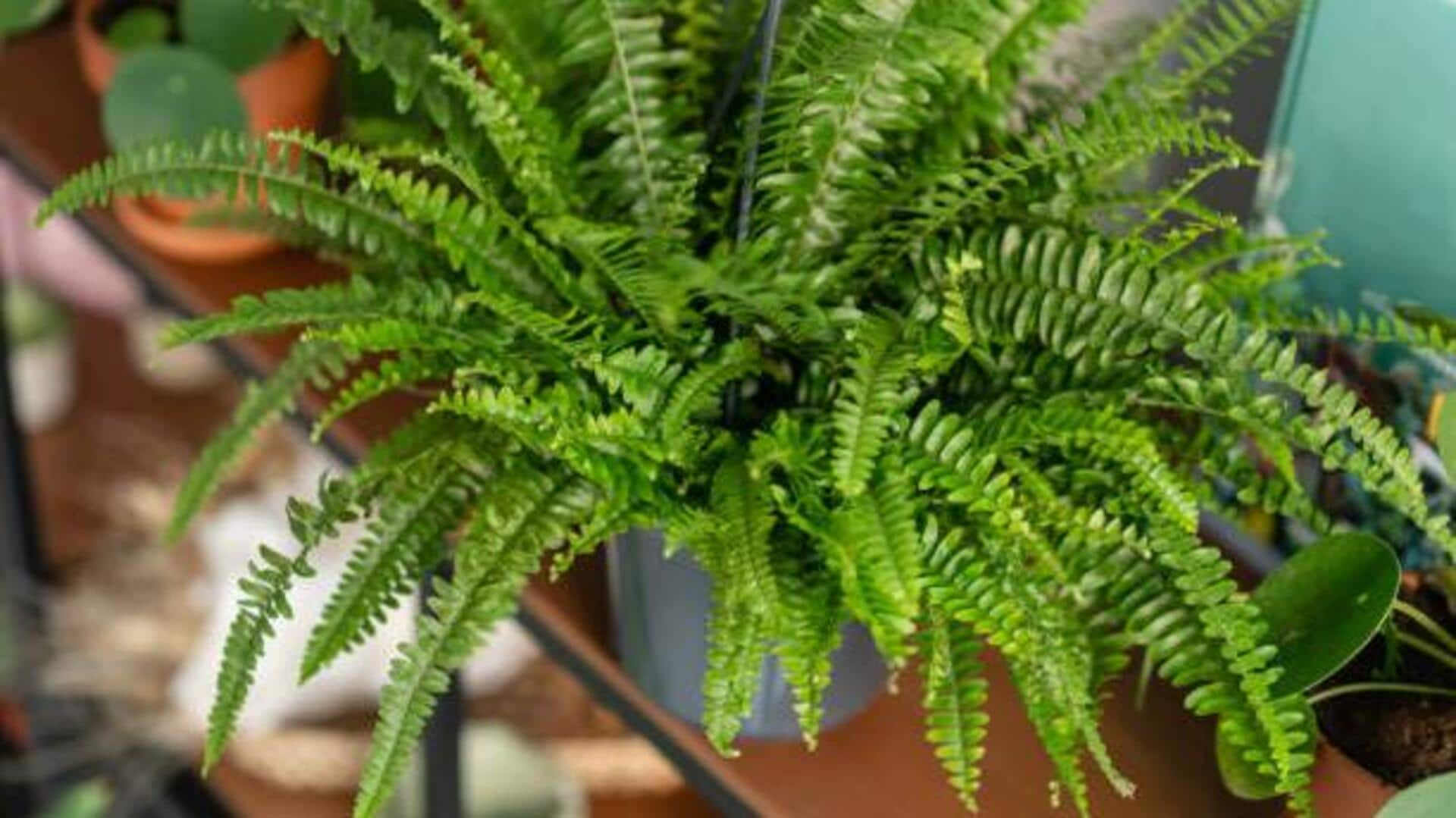
How to care for ferns in low light
What's the story
Ferns are one of the most popular houseplants, owing to their lush, green foliage and the fact that they can survive in low-light conditions. These plants can bring a touch of nature to any place, which is why they are a favorite among plant lovers. However, fern care in low light requires some special attention. Here are practical tips on caring for ferns when there's low natural light.
Selection
Choosing the right fern variety
Choosing the right fern variety is essential to work with low light conditions. Certain ferns such as the Boston fern or maidenhair fern are more forgiving of lower light conditions compared to others. Researching and picking a variety that naturally grows well in shaded conditions will improve your chances of succeeding. Consider humidity requirements, growth habits, etc. to pick your fern.
Humidity
Maintaining proper humidity levels
Ferns usually prefer a high humidity level, which can be difficult to achieve indoors. To keep enough moisture around your fern, use a humidifier or place a tray of water near the plant. Misting the leaves regularly can also keep humidity levels up. Keeping your fern adequately hydrated will prevent its leaves from drying out and turning brown.
Watering
Watering techniques for healthy growth
Proper watering is key to keeping ferns alive in low light. While overwatering can lead to root rot, underwatering can cause wilting. It is best to let the top inch of soil dry out before watering again. Using room temperature water helps avoid shocking the plant's roots.
Fertilization
Fertilizing wisely without overdoing it
Fertilizing ferns should be done sparingly since they don't require much feeding compared to other houseplants. Use a balanced liquid fertilizer diluted at half strength once every month during growing seasons like spring and summer if necessary. Avoid fertilizing during fall or winter months, as this could harm rather than help growth efforts due to lack of sunlight exposure needed by most plants, including these types too.